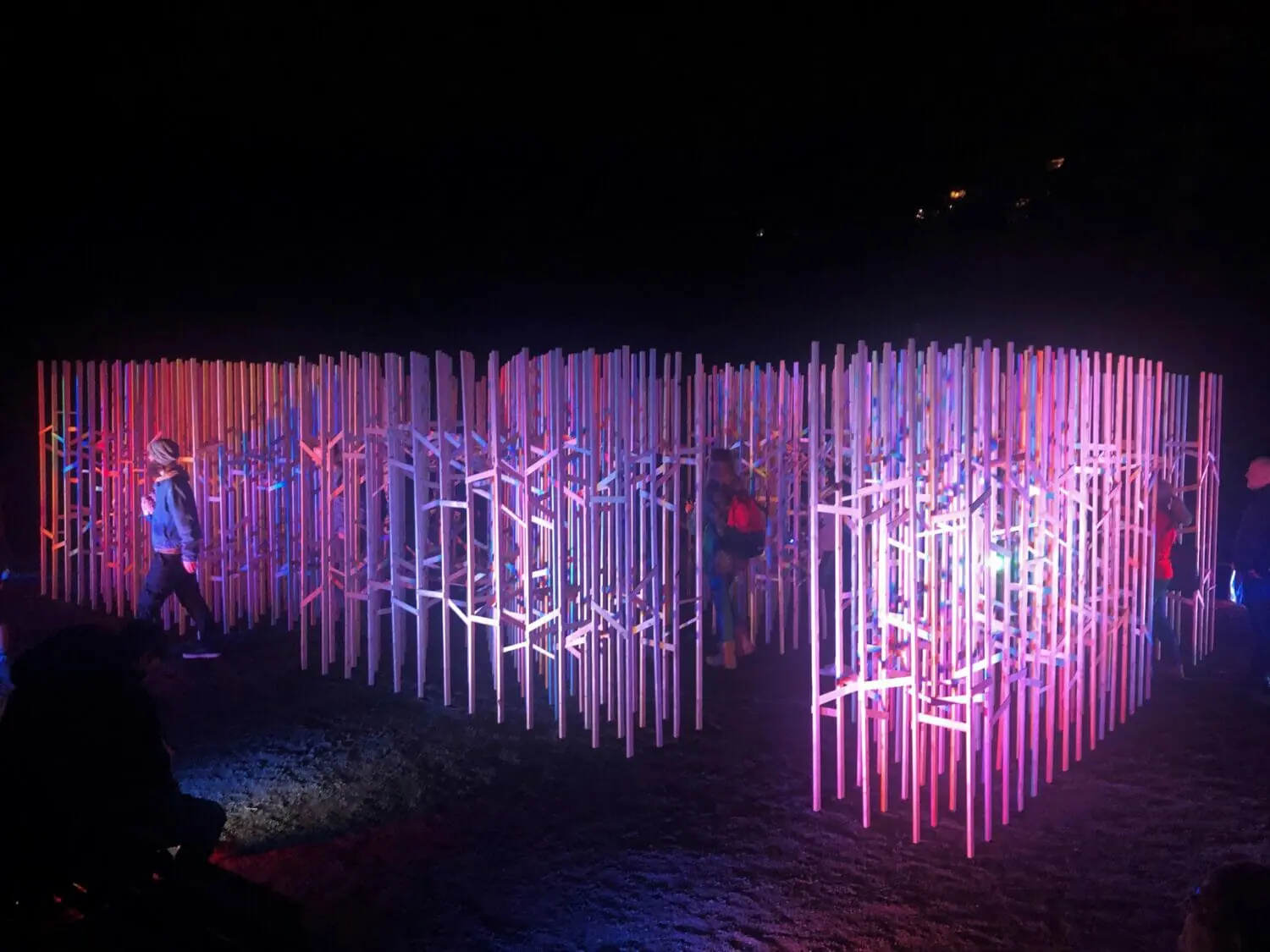The twelfth annual Nocturne: Art at Night festival took place on Saturday, Oct. 19. Its art installations ran from 6 p.m. to midnight across Halifax and Dartmouth. The non-profit event works with a new curator every year to create a theme and present anchor artists.
This year, the curator was Tori Fleming, the director of programming at Centre for Art Tapes. In an interview with Halifax Today, Fleming said that this year’s “scaffold” theme was meant to show the ways in which the city and its social, political and physical structures are changing.
Another addition to this year’s festival is its commitment to climate action. In a blog post, Nocturne organizers outlined some of the ways in which sustainability would be incorporated into the event. This included purchasing reusable supplies where possible and raising awareness on how to be environment-friendly as a festival attendee.
“We like to say the art is very ephemeral during the six-hour festival — it’s here for a moment and then it’s gone,” said Brianne Bezanson, Nocturne’s communications director, in an interview. “We really don’t want our environmental impact to last longer than that.
According to Bezanson, is the festival’s first year being vocal about the action they are taking for the environment.
Taking responsibility
Bezanson said Nocturne’s size and lack of gates and tickets creates unique challenges when it comes to controlling how the event runs. Organizers, because of this, turned their attention towards encouraging attendees to take the responsibility and be conscious of their environmental impact.
On Oct. 15, Nocturne hosted a workshop at the Tare Shop, a Halifax-based store with package-free and environment-friendly products. The workshop targeted those planning on attending the festival and offered tips on how to enjoy the event while remaining environmentally conscious. These tips included carrying reusable food and beverage containers, using reusable tote bags for purchases, and carrying reusable handkerchiefs instead of paper tissues.
Kate Pepler, owner of the Tare Shop, partnered with Nocturne to also create a tiered certification program that challenged local cafes and restaurants that would be open during the event to reduce their environmental impact.
While this may be the first time Nocturne spoke about its commitment to including sustainability in its planning and presentation, climate action is a theme that has been reflected in Nocturne’s art exhibits in the past.
In 2018, artist Carrie Allison presented Concrete Gesture, a performance that involved walking around the city and picking up garbage from construction sites. Allison’s performance acknowledged Indigenous peoples and their allies that are on the front lines of climate action. The year prior, Kathrin Winkler presented A Harbour Lost in Time, a series of images of sea creatures, both real and imagined, that explored marine species and habitat loss.
This year, Dalhousie alum and Ecology Action Centre’s artist-in-residence Logan Robins created What the Owl Said to the Orangutan, a three-part puppet show looking at the past, present, and potential future of human impacts on the environment.
SUB: Art as Action
EAC Volunteer and Events Coordinator Joanna Bull said that art an action overlap; social movements are stronger when they have something to spark interest and motivate people. “I think that an art installation can do what the most well-written policy brief or press release never could, in terms of engaging people’s imaginations.”
Bull, who has worked at the EAC for a little over six years, credits her own understanding of how art and climate action combine to Mi’kma’ki 2030, a multi-disciplinary installation-performance. It explores, through the work of a number of different Black and Indigenous artists, the possible futures for the Mi’kma’ki, given the changing climate.
This is only the second year of the EAC’s Nocturne Artist-In-Residence program, but Bull said she foresees similar projects continuing to grow in both popularity and importance.
“I think that the environmental movement needs to look more into how to engage with artists in our community,” she said, “and how to engage with ways of telling stories so that people can really connect with them.”
Disclosure: Logan Robins is the Gazette’s delivery driver.




Recent Comments